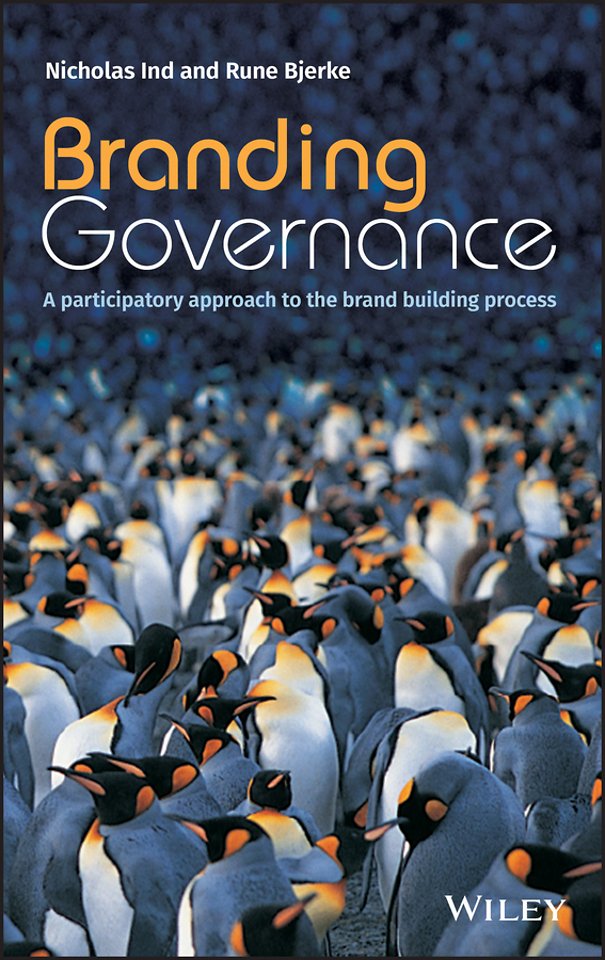Branding Governance
A participatory approach to the brand building process
Gebonden Engels 2007 1e druk 9780470030752Samenvatting
'Branding Governance' gaat de uitdaging aan met het traditionele denken over merken. Nicholas Ind en Rune Bjerke onthullen de gebreken van de marketingcommunicatie-geleide benadering van brandbuilding. De auteurs pleiten in plaats daarvan voor een organisatiebreed proces met hoge deelname dat zowel voldoening geeft aan de werknemers als waarde voor de klanten. Ze leggen de nadruk op het belang van interactie en ervaring in het bepalen van de merkwaarde.
Trefwoorden
branding participatief management merkontwikkeling organisatiecultuur marketing klantgerichtheid leiderschap personeelsmanagement merkwaarde binnenkant-naar-buiten perspectief marktoriëntatie medewerkersgedrag merkbeleving merkidentiteit merkimago co-creatie organisatieverandering strategisch management narratief merkbeloften interne communicatie organisatie-identiteit marktonderzoek klantervaring
Trefwoorden
Specificaties
Lezersrecensies
Inhoudsopgave
U kunt van deze inhoudsopgave een PDF downloaden
INTRODUCTION
The philosophy of the book and the concept of participation
The participatory branding philosophy
Introducing the assemblage model
Conclusion
PART I: TWO CONCEPTS OF BRAND BUILDING
Introduction
1 THE OUTSIDE–IN PERSPECTIVE
Outline: 1960 onwards
The nature of brands and branding
Understanding customers
The challenge of research
Using customer knowledge to build brands
Giving brand values meaning
Communicating the brand
Conclusion
2 THE INSIDE–OUT PERSPECTIVE
The beginnings of inside–out thinking
Citizen employees
The value of values
Behavioural branding
Connecting employees and customers
Conclusion
PART II: PARTICIPATORY BRANDING AND THE ASSEMBLAGE
Introduction
3 A PARTICIPATIVE APPROACH TO MARKETING
From marketing to market orientation
The principles of market orientation
Applying market-oriented thinking
Participatory market orientation (PMO)
Recipe for moving to PMO
Conclusion
4 PARTICIPATORY MARKETING
Connecting and co-creating with customers
Building internal engagement
Integrated marketing
Enhancing brand equity
Brand equity and fi nancial brand value
Conclusion
5 HUMAN RESOURCES
The role of people in the organisation
The right people
Building identifi cation, internalisation and commitment
Retention and development
Conclusion
6 CULTURE
Understanding culture
The use of narrative
Organisational sense-making
Participative cultures: participating and networking
Conclusion
7 PARTICIPATORY LEADERSHIP
From arboresence to assemblages
Storytelling and transformational leadership
Symbolic acts
Reinforcing the vision
Conclusion
8 EVALUATION
The idea of branding governance
Organising for management decision-making
Branding governance: the assemblage branding elements
How can brand equity and marketing efforts be measured?
How can HR drivers be measured in branding governance?
How can organisational culture be measured in branding governance?
How can leadership be measured?
Presenting the data
Conclusion
REFERENCES AND BIBLIOGRAPHY
INDEX
Anderen die dit boek kochten, kochten ook
Rubrieken
- advisering
- algemeen management
- coaching en trainen
- communicatie en media
- economie
- financieel management
- inkoop en logistiek
- internet en social media
- it-management / ict
- juridisch
- leiderschap
- marketing
- mens en maatschappij
- non-profit
- ondernemen
- organisatiekunde
- personal finance
- personeelsmanagement
- persoonlijke effectiviteit
- projectmanagement
- psychologie
- reclame en verkoop
- strategisch management
- verandermanagement
- werk en loopbaan








